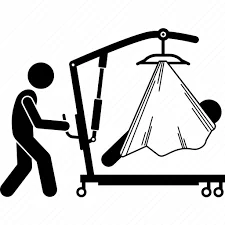In today’s fast-paced world, technology continues to make significant strides in various industries, including healthcare. Among the innovations enhancing patient care and comfort, Electric Actuators have emerged as a game-changer, particularly in the realm of Patient Hoist/Lifters. These advanced linear motion devices are making it easier for caregivers to provide better assistance and support to patients. In this article, we’ll explore the role of Electric Actuators in patient hoisting systems and how to select the right one for your needs.
Understanding Electric Actuators
Electric Actuator, a term often used in industrial and automation contexts, refers to a device that converts electrical energy into mechanical motion. In the healthcare sector, these actuators play a crucial role in Patient Hoist/Lifters by providing precise linear motion, which is essential for lifting and transferring patients safely and comfortably.
Electric Actuators come in various forms, including push-pull linear actuators, linear electric actuators, and linear actuator motors. These devices are known for their reliability, precision, and ability to handle heavy loads, making them ideal for patient care applications.

Actuator Selection: Choosing the Right Fit
Selecting the appropriate Electric Actuator for a Patient Hoist/Lifter is crucial to ensure the system’s efficiency and safety. To simplify this process, refer to an Actuator Selection Table, which outlines key specifications and performance parameters of various linear actuators. Consider factors such as load capacity, speed, stroke length, and environmental conditions to make an informed decision.
Electric Actuators in Patient Hoist/Lifters
Electric Actuators have brought about significant improvements in patient care, especially in healthcare facilities like nursing homes and hospitals. Here’s how they are transforming the patient hoisting process:
1. Precision and Control: Electric Actuators offer precise control over linear motion, enabling caregivers to lift and lower patients smoothly and without sudden jolts. This enhances patient comfort and minimizes the risk of injury during transfers.
2. Increased Efficiency: Linear electric actuators are capable of high-speed operations, reducing the time required for patient transfers. This not only improves efficiency but also allows caregivers to attend to more patients in less time.
3. Safety: Safety is paramount in patient care. Electric Actuators are equipped with safety features such as emergency stop buttons and overload protection, ensuring the well-being of both patients and caregivers.
4. Adaptability: These actuators can be integrated into various patient hoist and lifter designs, including dental chair electric actuators, hospital bed electric actuators, and treatment couch electric actuators, making them suitable for a wide range of healthcare settings.
Calculating Linear Actuator Position
To ensure precise patient positioning and safety during transfers, it’s essential to calculate the linear actuator’s position accurately. Most modern Electric Actuator come with built-in position feedback systems that provide real-time information about the actuator’s position, making it easier for caregivers to control and monitor the lifting mechanism.
Electric Actuator Manufacturers in India
For those seeking Electric Actuator in India, several manufacturers, such as Jiecang Linear Actuator India and Kathir Sudhir Automation India Pvt Ltd, offer high-quality linear motion solutions tailored to meet the specific needs of the healthcare industry.
Conclusion
Electric Actuator have revolutionized patient care by enhancing the efficiency and safety of Patient Hoist/Lifters. With their precision, adaptability, and various safety features, these actuators are becoming indispensable in healthcare facilities worldwide. As technology continues to advance, we can expect even more innovative solutions to improve patient care and the well-being of both patients and caregivers.
